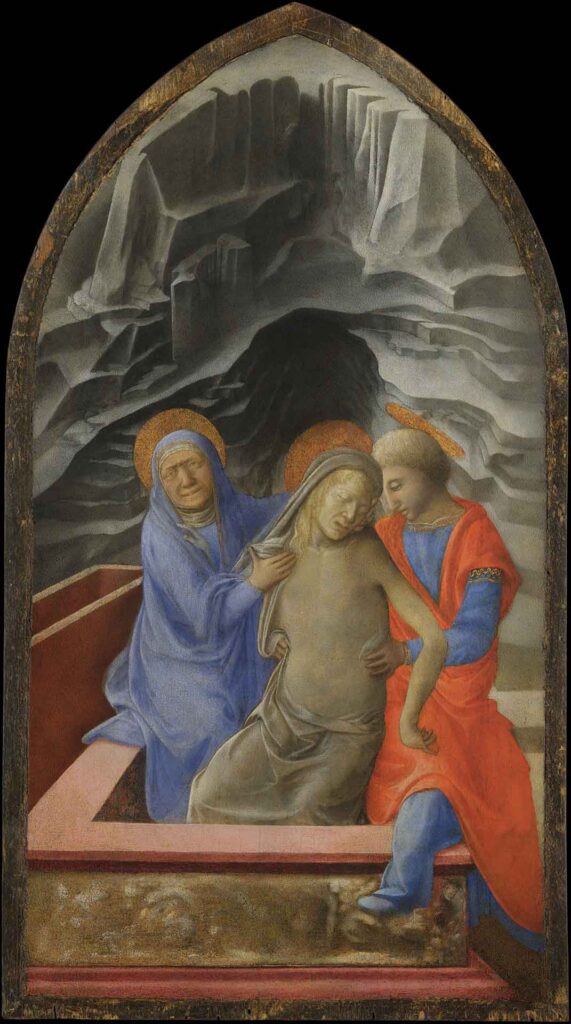Pietà
Filippo Lippi , 1435 - 1440
Description

Painted on a cusp-shaped panel, the work shows a remarkably refined Pietà of great quality. The Dead Christ, with a noble face bearing an intense expression and of leaden flesh colouring, rises from the grave, supported by the Virgin and by St John the Evangelist. The body of the Saviour is wrapped in the winding sheet, which also covers the top of his head, leaving only his trunk bare.
The Virgin holds his head in her left hand, while John supports him around the waist. The composition has been carefully studied and achieves remarkably sophisticated effects, as the detail of Jesus’ right hand just visible on the Virgin’s right shoulder shows, while his arm remains hidden by Mary’s.
A rocky mountain landscape, bleak and lifeless, towers in the background, with a grotto in the centre, a probable allusion to the tomb dug in the rocks into which, according to the Gospels, Joseph of Arimathea placed the Saviour’s body. A sophisticated panel for private prayer, the work relates to Filippo Lippi’s youthful period and can be dated to between 1435 and 1440, after the artist’s return from his stay in Padua. A.D.L. H.G.
Data Sheet
Author
Filippo Lippi, 1406-1469
Date
1435 - 1440
Material and technique
Tempera on panel
Measures
57.5 cm x 32 cm
Acquisition
Gian Giacomo Poldi Pezzoli bequest, 1879
Inventory number
1569
location
14th Century Room
The 14th Century Room, along with the 18th Century Room and the Perugino Room, housed much of Gian Giacomo Poldi Pezzoli’s collection of paintings. Historically known as the Third Picture Room and formerly the Venetian Room, it brings together works painted between the fourteenth and fifteenth centuries using the gold background technique.
collection
Paintings
The Museum hosts over 300 paintings. Among them, many Italian works from the Renaissance: masterpieces from Tuscany (Botticelli, Piero della Francesca, Pollaiuolo), Lombardy (Luini, Boltraffio, Solario) and Veneto (Bellini, Mantegna). Important is also the group of 18th century Italian painting (Guardi, Canaletto, Tiepolo, Fra Galgario). In the collection, there are mainly portraits and small size paintings.
